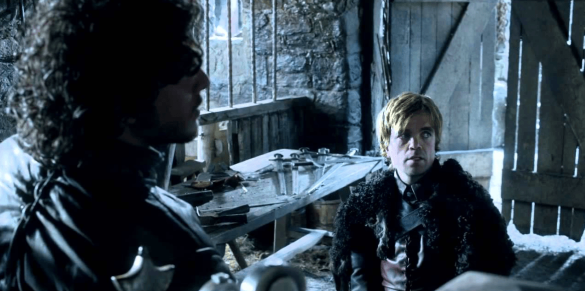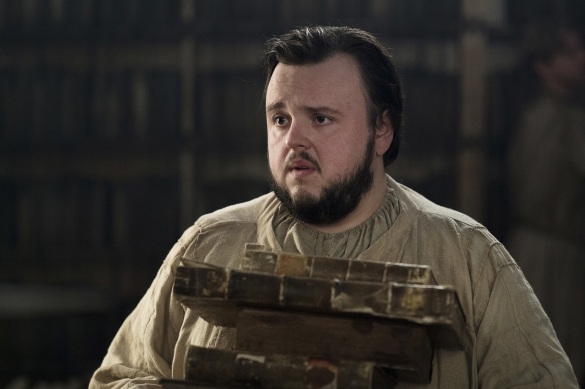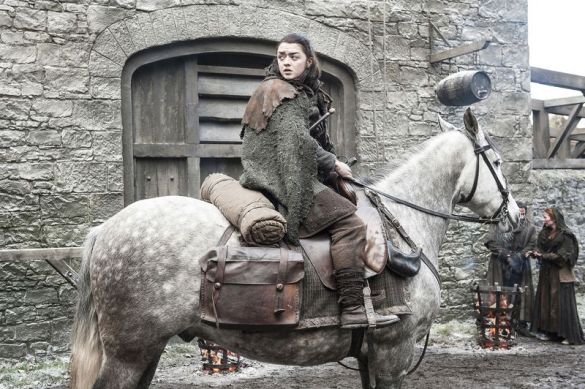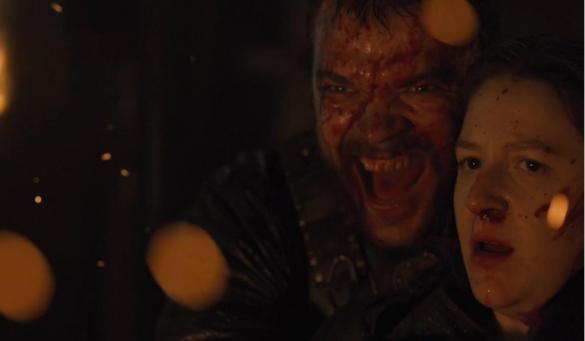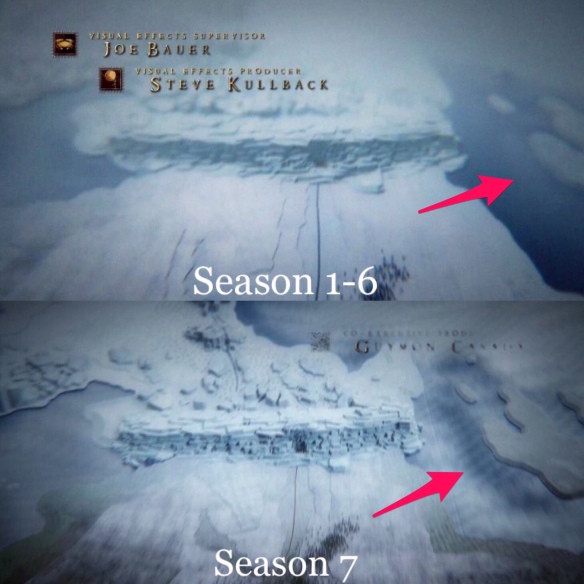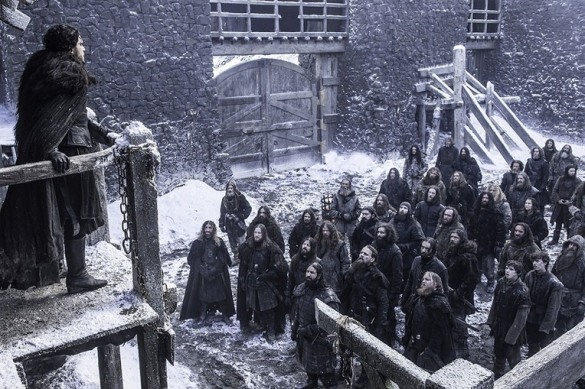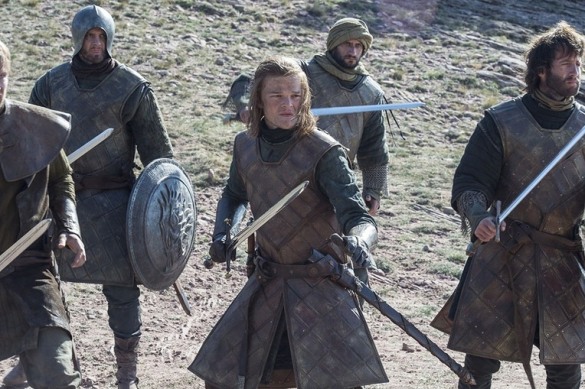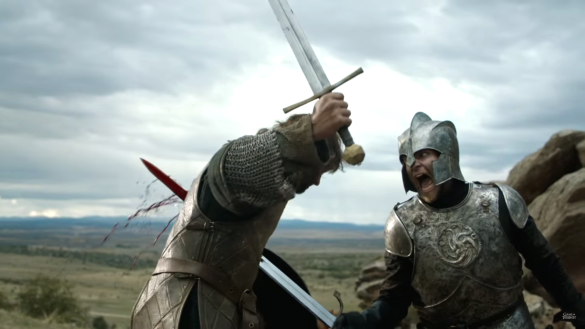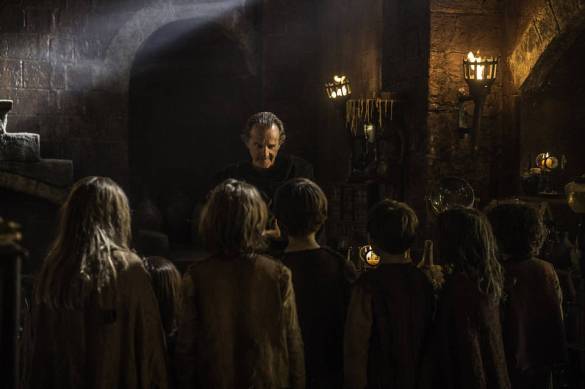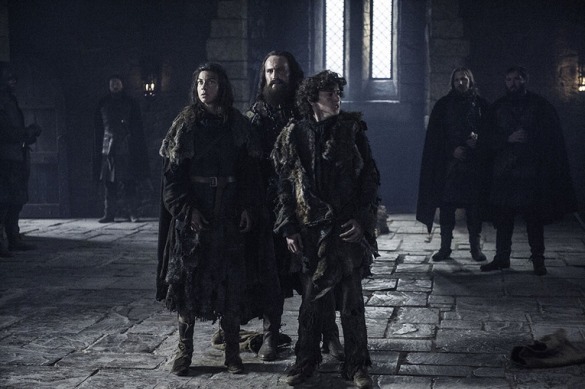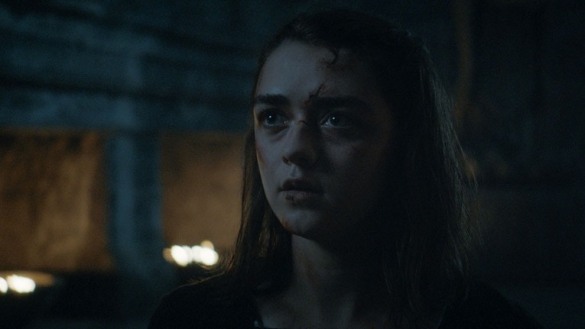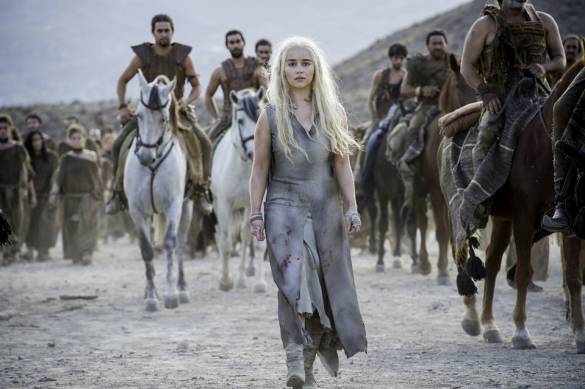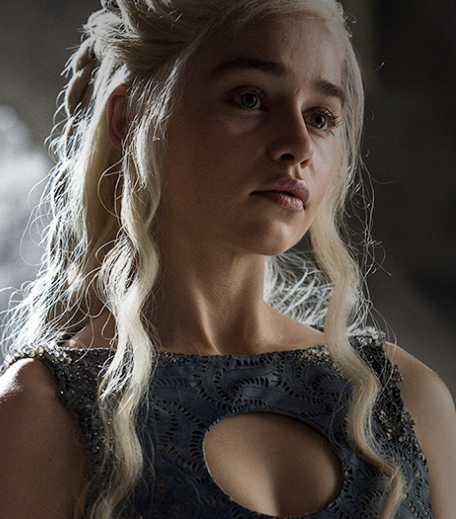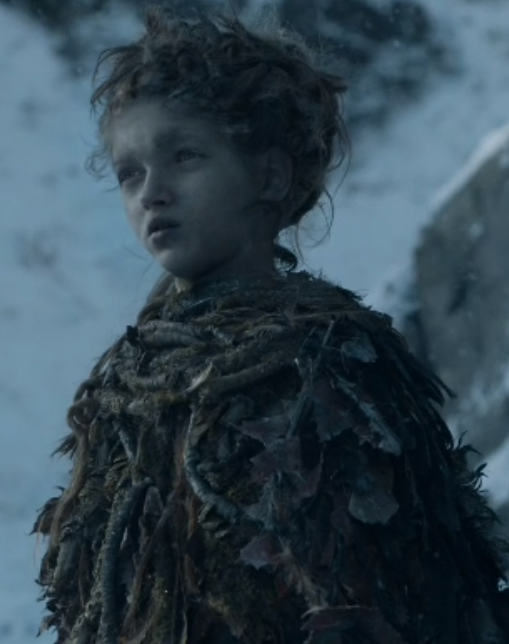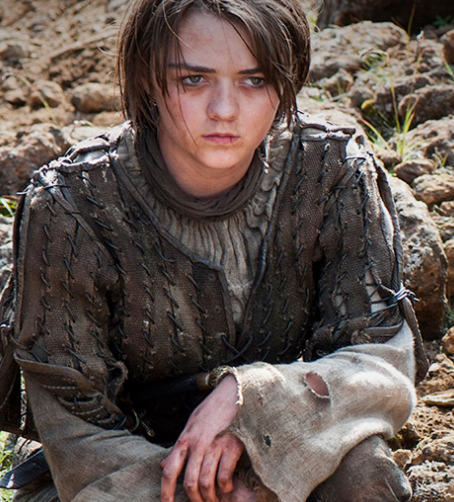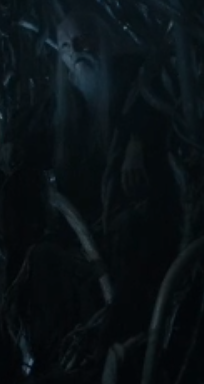DISCLAIMER: THERE ARE NO SPOILERS IN THIS ARTICLE. I HAVE NO KNOWLEDGE OF WHAT IS TO TRANSPIRE IN THIS STORY. ANY VIEWS OR CONTENT EXPRESSED ARE SOLELY PERSONAL THEORIES, OPINIONS AND INSIGHTS.
At long last, the wait is over. Don’t feel totally satisfied? That’s okay, don’t beat yourself up over it. While the season eight opener was devoid of any major jaw-dropping moments, it achieved exactly what it set out to — it laid the ground work for what will no doubt be a massive conclusion to this epic saga.
Sure, after waiting almost two years, we all would have enjoyed a classic Thrones battle scene. We even would have settled for a more subtle reveal that perhaps would shed light onto any one of the many burning questions we have. Be patient, young grasshoppers — all of that will come.
What the premiere episode, entitled Winterfell, lacked in big moments, it made up for in powerful (and often awkward) reunions. These reunions paid homage to the past; they served as a subtle reminder of all the story’s twists and turns that have led these characters to where they are today. But these reunions also starkly foreshadow the future, reminding us that it is the present-day configuration of characters that will likely determine the very fate of mankind. The past, present and future are all here, now. So before you tell all your friends and co-workers how disappointed you were with the season-opener, take a moment to appreciate it for what it was — the quiet before the storm. There will be no shortage of action to come in the remaining five episodes, so let’s take a moment to analyze and appreciate all the nuances from the season premiere.
A Credit to the Credits
The opening credits are an often overlooked and under-appreciated facet of most TV shows. In the past decade or so, HBO has started to change that in a big way, as productions of some of their biggest shows have brought the opening credits to the forefront. From True Detective, to Westworld, to Game of Thrones — opening credits have morphed from obligatory bore to masterful pieces of art. None more-so than Game of Thrones. Could there be a more triumphant blend of imagery, music and motif? I say not. Thrones transformed the way we think about the opening credits altogether. No longer just a static introduction to offer information about the show’s cast and crew, but rather an immersive vehicle to enhance and evolve the storytelling itself.
So as the final season approached and you asked yourself what Thrones producers would choose for the very first scene, you likely overlooked considering the opening credits themselves. And that is where, once again, Thrones delivered in a way we could have never seen coming. In short, the opening credits were completely revamped, in just about every way possible. The scope of locations presented? Different. The sequence in which they were presented? Different. The looks and feel? Different. The astrolabe that offers up Westeros’ biggest historical events? Different. With all this change, before you even think about breaking down the show, you must dive deeper into the credits themselves to truly appreciate the first episode.
For starters, the opening credits simply looked a lot cooler. They looked newer, shinier, sleeker — almost as if this version of the credits was produced 10 years after the original version. Oh wait, it was. But the “coolness” of the credits is just the beginning. There were a bunch of very material changes, the first of which can be seen on the astrolabe, an object that has served as the central motif to the show’s opening credits since day one (and likely has a great significance that I hope will be revealed before the show’s culmination). If you’re not sure what the hell an astrolabe is, see below.
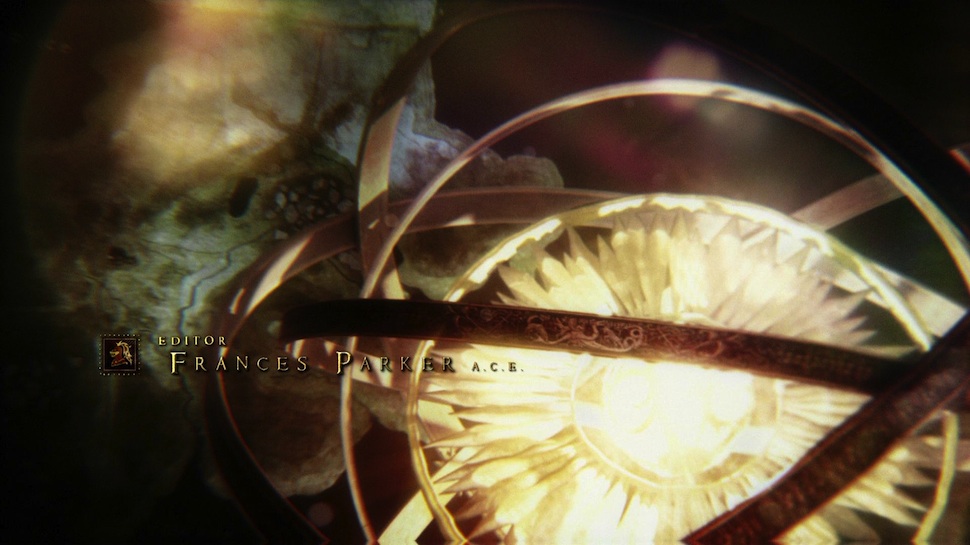
As you’ll see in the above photo, which features an astrolabe from the older credits, we can see images recorded on it which tell the story of Westeros’ history. The major historical events that have always been displayed are The Doom of Valyria, Robert’s Rebellion and the rise of House Baratheon. These three events, the fall of the greatest civilization, Valyria, (~400 years ago), the great war that would see the Targaryen dynasty overthrown (~20 years ago), and Robert Baratheon usurping the Iron Throne (~20 years ago), would set into motion the story we would then begin watching. So, it made sense that the astrolabe in the opening credits captured these three major historical events — they clued us into the important moments that transpired before our time.
But in the course of the last 10 years, there have been entirely new events, ones that will likely change the course of history, so it was only right that the opening credits of season eight featured a much-updated astrolabe. As you’ll see in the photos below, three new historical events are highlighted: the reemergence of dragons into the world, The Red Wedding and The Night King using his undead dragon to tear down a chunk of The Wall. Check them out below:
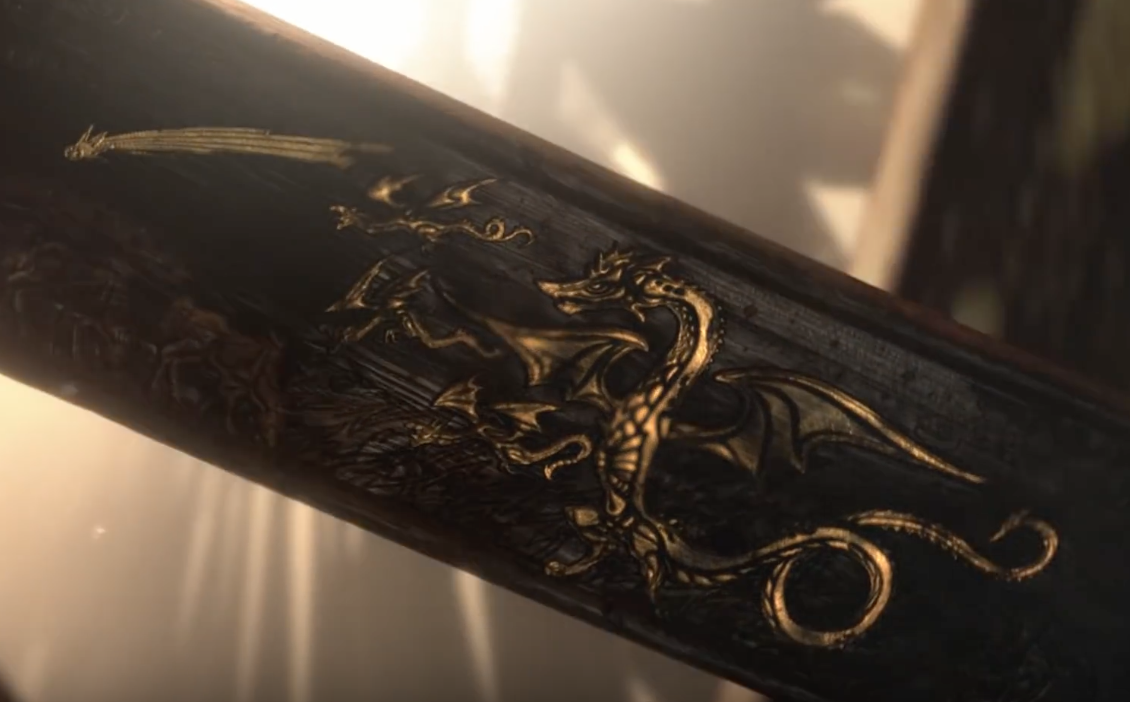
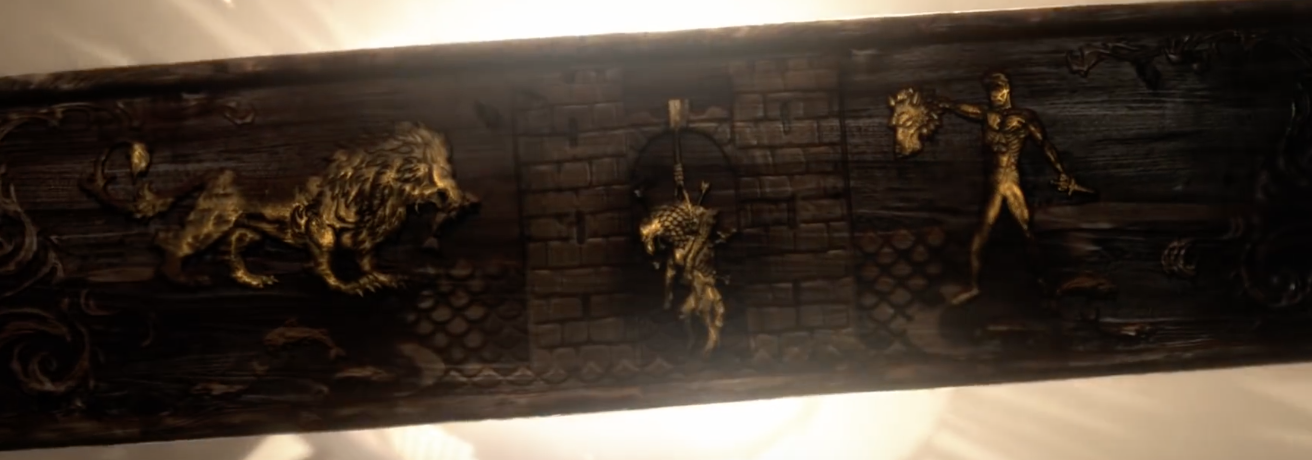
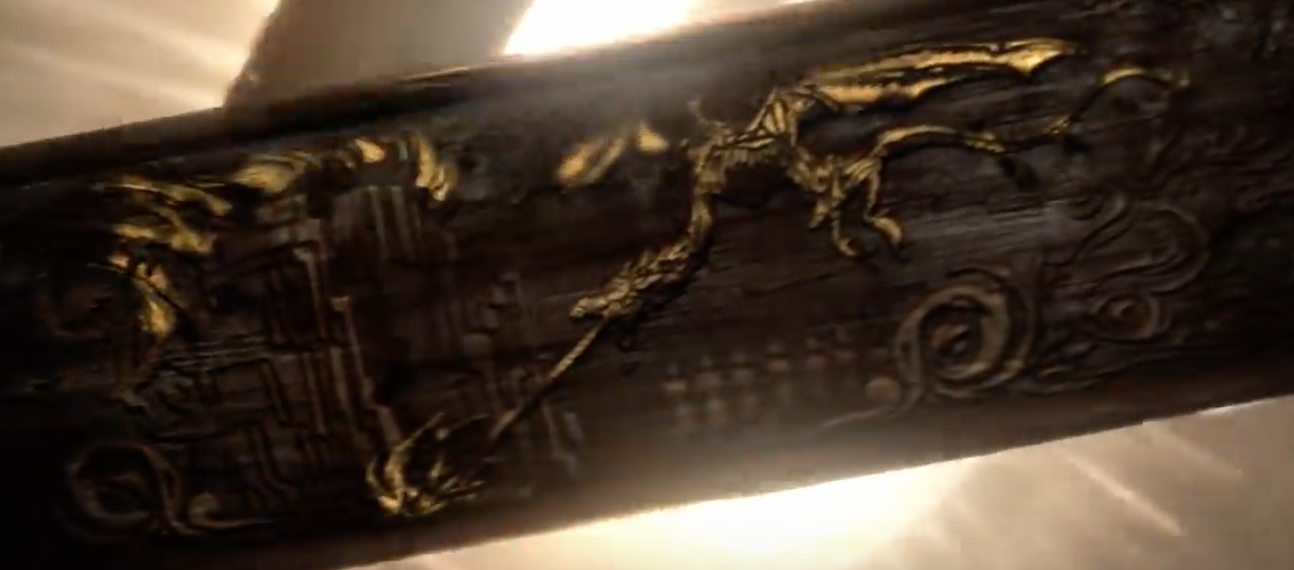
If you were too hyped up for the opening scene and overlooked the show basically telling you that history has been rewritten in front of your very eyes, not to worry, you weren’t alone. But the magic of the opening credits continued from there. One huge change in approach is the direction in which locations were presented. Historically, viewers were always taken on a journey from south to north, generally ending around The Wall. The new credits did a complete 180, starting at The Wall (which now has a huge hole in it), and working down south. For one, this was an out-of-the-gate reminder that The Night King and his army have done something that has never been done before: they have successfully destroyed a chunk of The Wall, a magical structure built over 8,000 years ago. And as such, they are now on the loose, making death and destruction imminent.
As we continue just past The Wall, the opening credits used a new technique to offer viewers a glimpse into where the Night King and his army are lurking. The terrain they present is made up of tile-like pieces, which they flip from normal snowy white to icy White Walker blue to show the march of the Night King’s army. As the story evolves and their march continues, my guess is that we’ll see a lot more of these icy blue tiles being flipped.
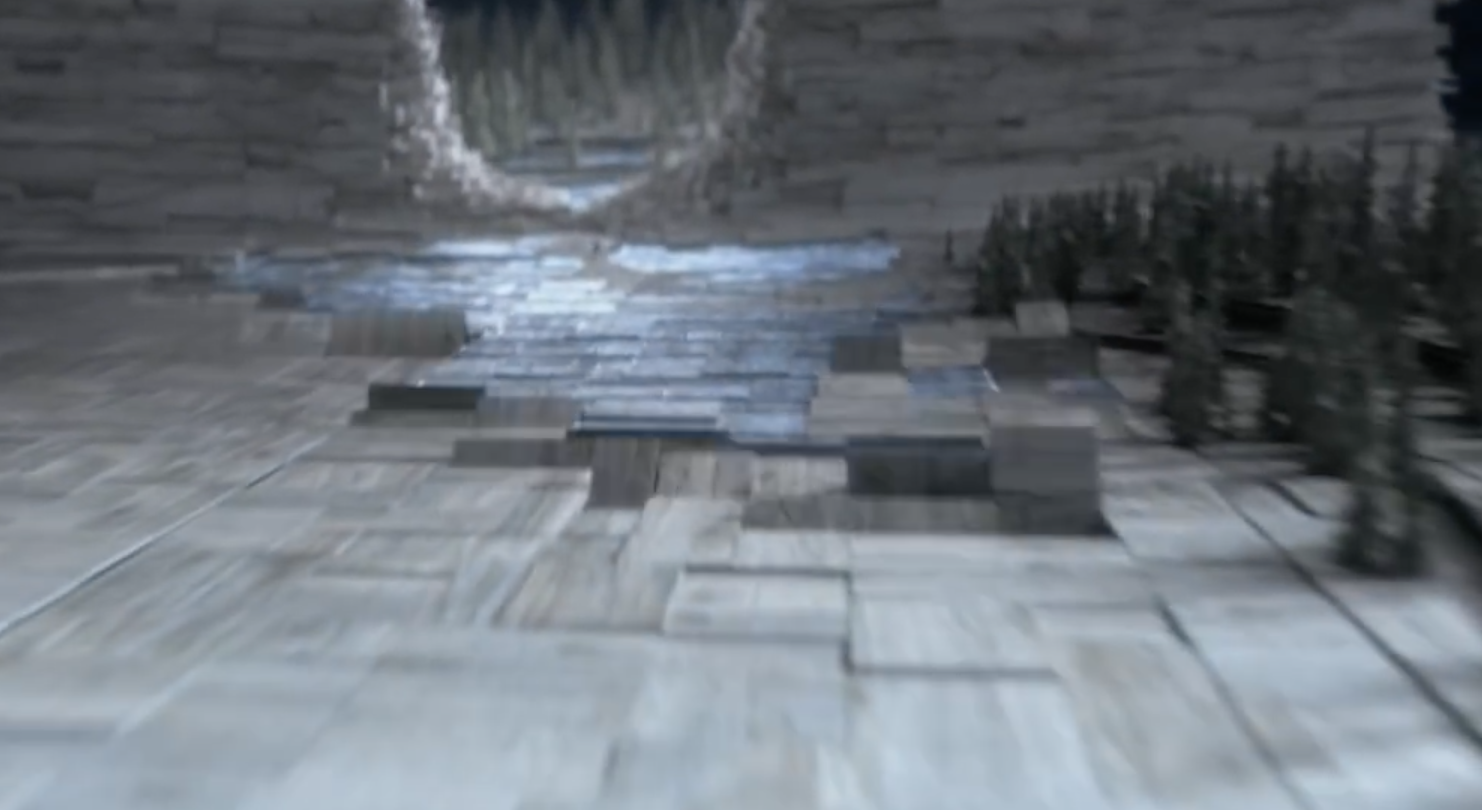
Speaking of the Night King’s descent south, we are introduced to a brand new location, The Last Hearth, which was a castle belonging to House Umber. We see the army of the dead’s tracks leading right up to this castle, and to no surprise, we find out by the end of the episode that The Night King had definitely been there (we’ll get more into that later). What you also might have missed in the opening credits, is that they showed this castle built upon a small spiral mountain — the same spiral that has been synonymous with The Night King/White Walkers (we’ll get more into that one later as well).
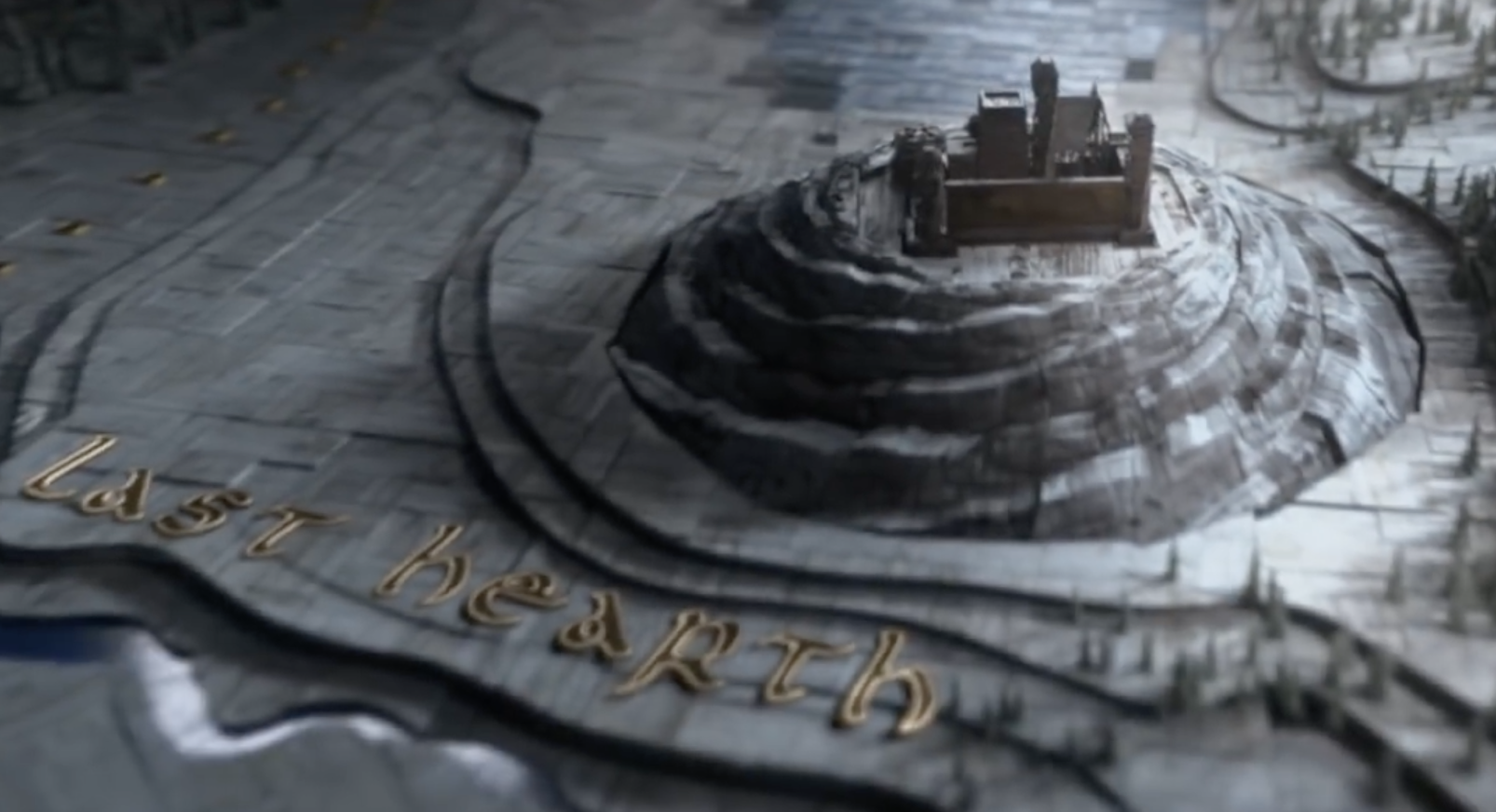
The opening credits just got better from there, as we were offered new perspective into some of the most important castles, locations we now know will be central to the end of this story. At Winterfell, for instance, we got so much more than the castle exterior we have seen the past seven seasons. The opening credits took us deep into the interior of the castle, through the Great Hall, and more importantly, deep below, into the almighty crypts. (As an aside, before the start of this season, I wrote a deep theory about the significance of the crypts of Winterfell. That theory is only underscored by the opening credits choosing to show them once again. If you haven’t already, I would recommend reading it here).
Similarly, our arrival to King’s Landing took us deep into the castle, from The Red Keep to the Throne Room. It is no surprise that the locations ended there — a reminder that the majority of Westeros’ other locations are no longer as relevant to this story, one that has become acutely focused around just a few locales. What’s also worth noting is that the credits end in The Throne Room, with a final glimpse of the good ole’ Iron Throne. As of late, we’ve been told time and time again that the Iron Throne simply doesn’t matter all that much when compared to the war to save the human race. But the opening credits, which come to a close at the foot of the Iron Throne, perhaps would tell us otherwise…
If nothing else happened in this episode, I was enthralled by the magic of these newly revamped opening credits. Take a minute to soak it in one more time. Bravo…
A Melodrama in Winterfell
If I had one knock against this episode, it was not the lack of entertainment or action, but rather that it often felt more like soap opera than epic fantasy. I appreciate the nuanced conflicts presented by the many character reunions that took place in this episode, but the ensuing drama felt a bit tiresome, especially given the backdrop of fire-breathing dragons patrolling the skies and a freakin’ army of the dead at the doorsteps of Winterfell. Given these fantastical elements, the absolutely dire situation that every person in The North (and beyond) faces, I found it frustrating and childish some of the melodrama that took place. Sansa, there’s no time for you to be a whimpering child just because you are not as pretty or powerful as Daenerys. Northerners, there’s no time for you all to continue to be stupidly naive in condemning Jon for joining forces with Daenerys. Yet, this is the drama that I felt consumed Winterfell, and I simply thought we were past it.
What quickly became clear is that a story once characterized by a plethora of teams all trying to out-strategize each other, has condensed into just two sides. And what we quickly see from the opening scene is that it seems like just about everybody not named Cersei is on team Dany/Jon. Characters from all corners of the world, entangled by a complicated series of events over the years, have now all united where it all began: Winterfell. The once-enslaved Unsullied soldiers, the nomadic Dothraki warriors, even Dany and her dragons — all of which would have otherwise existed thousands of miles from Winterfell, have come together to fight back the army of the dead (who are just miles away).
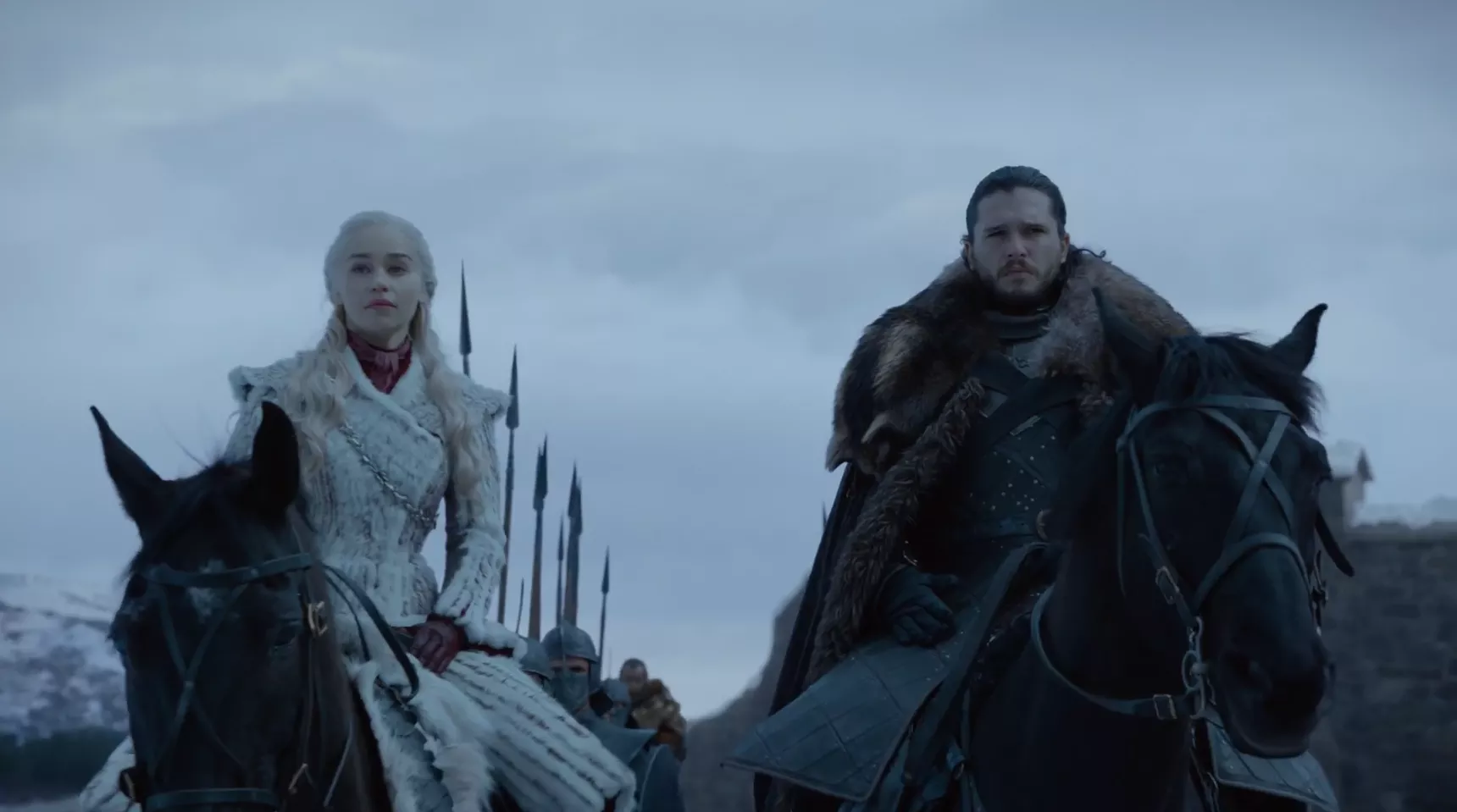
As so many of the story’s main characters descend upon Winterfell, awkward reunions are inevitable. For starters, this couldn’t have been the homecoming Jon Snow was hoping for. All he did was put aside his King in the North crown in an attempt to forge an alliance with allies that could help protect The North. Oh, and he also ventured north of The Wall (again) and led a battle against The Night King’s army, while successfully capturing a wight and proving to the world that the army of the dead exists. No big deal. What should have been a hero’s welcome was anything but.
Sansa continues to be a whiny pain in the a**, continuing to chastise Jon for “abandoning” The North, despite the reality that he was trying to save it. But it doesn’t stop there — Sansa has something new to be upset about — a prettier and more powerful female. She makes clear her distaste and distrust of Daenerys, despite the clear facts: 1) Daenerys has the strongest army in the world; 2) Jon risked everything to forge this alliance; 3) Nothing else matters other than the fight against the dead. But still, Sansa is having a tough time backing Jon, and as a result, Jon is left having to continue to argue with Sansa behind closed doors. Their conversation culminates when she asks if he bent the knee because he believes in her or because he loves her. They are interrupted before he can respond, though the answer is likely both.
Jon’s reunion with his younger brother, Bran, whom he had not seen in many years, was also nothing to write home about. He wasn’t able to get more than a stoic word or two out of his younger brother. Even his reunion with Sam, his closest friend, was pretty quickly soured by Sam informing Jon that Daenerys had executed Sam’s father and brother. The poor guy, Jon risks it all, only to return home to a temperamental sister, a younger brother that has now turned into a Three-Eyed Raven, and a best friend whose family has been executed by the woman he’s brought into the fold. Not exactly a storybook homecoming. But if there was a silver lining, it was his long-awaited reunion with Arya. Of all the Stark children, Jon and Arya were always the closest, sharing the bond of being the outsiders of the family. Standing beneath the sacred weirwood tree, we are reminded of the Northern blood that runs through their veins, and that in many ways, they are all that’s left of House Stark.
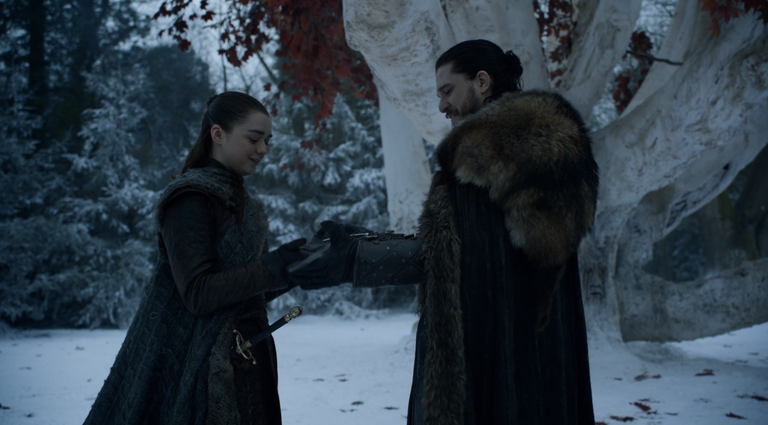
Jon aside, there were a handful of other reunions, none of which offered much satisfaction. The one I have been waiting on for so many years finally happened between The Hound and Arya. Their storyline together was always one of my favorites, and I was hoping for more, if and when their paths crossed again. Comprised of just a few meaningless words, their reunion was short-lived and unmemorable. Arya also reunited with her longtime friend, Gendry, who to no surprise, is using his smith skills to oversee the construction of White-Walker-killing weapons made of dragonglass. There wasn’t much to this reunion either, again, a bit disappointing. After storylines that spanned several seasons and characters that developed deeply rich relationships, I couldn’t help but feel the show really missed capturing the power and emotion that should have been present for some of these reunions. But then again, compared to the impending war to preserve humanity, how important are any of these relationships really?
Last, but not least, we had a couple Lannister reunions worth mentioning. Tyrion and Sansa, once man and wife, shared a brief exchange, in which Sansa continued on her mission to let everybody know how displeased she is. After Tyrion mentions that Cersei is sending the Lannister troops north to join the fight, Sansa insults Tyrion by telling him that he was once the cleverest man she knew. In fact, Sansa’s instincts are correct, and we know as viewers that Cersei does not intend to send her troops north. The only other person who knows that, is the person she told it to: Jaime, who makes an appearance at King’s Landing in the final scene.
Speaking of awkward reunions, the first person he makes eye contact with is Bran, whom he pushed off the ledge and paralyzed all the way back in season one. If that’s not enough for all of the Starks to want to execute him, Jaime is all the Kingslayer, the man who killed Daenery’s father. It’s safe to say he hasn’t exactly stumbled upon an audience of allies, and he’s going to really need some good defense if he’s to stay alive. Lucky for Jaime, Brienne cannot be too far (strange that we did not see her in this episode), and she knows a side of Jaime that few other do. During their travels together, Jaime opened up to Brienne in a way that we had never seen before, and we started to realize the impossible situation he found himself in (sworn to protect the Mad King as he served in his Kingsguard, yet also sworn to uphold the honor of his father, Tywin, who was plotting to overthrow The Mad King during Robert’s Rebellion). I imagine Daenerys will want to execute Jaime for these crimes, while Brienne will come to his defense. Given Bran’s visions of the future, perhaps he too will come to Jaime’s defense, especially if he has seen a role Jaime will play in the Great War to Come.
Before we move on from Winterfell, there was one more scene that really rubbed me the wrong way. Jon and Dany riding their dragons together felt more a scene out of a Disney kids movie than it did a serious fantasy drama. It also felt incredibly rushed and contrived. I get it, Jon is a Targaryen, and he’s the one that is meant to ride one of Dany’s dragons with her. But anybody other than Dany mounting a dragon for the first time should be an incredibly powerful moment. It should be slow. It should be thoughtful. It should be emotional. This was anything but. One minute he’s talking to Daenerys, the next he’s full blown riding this dragon like it’s no big deal. And the way they swished and swooped through the air together just undercut what should have otherwise been a major moment in this story — two Targaryens riding their dragons together, something that has not happened for hundreds of years.
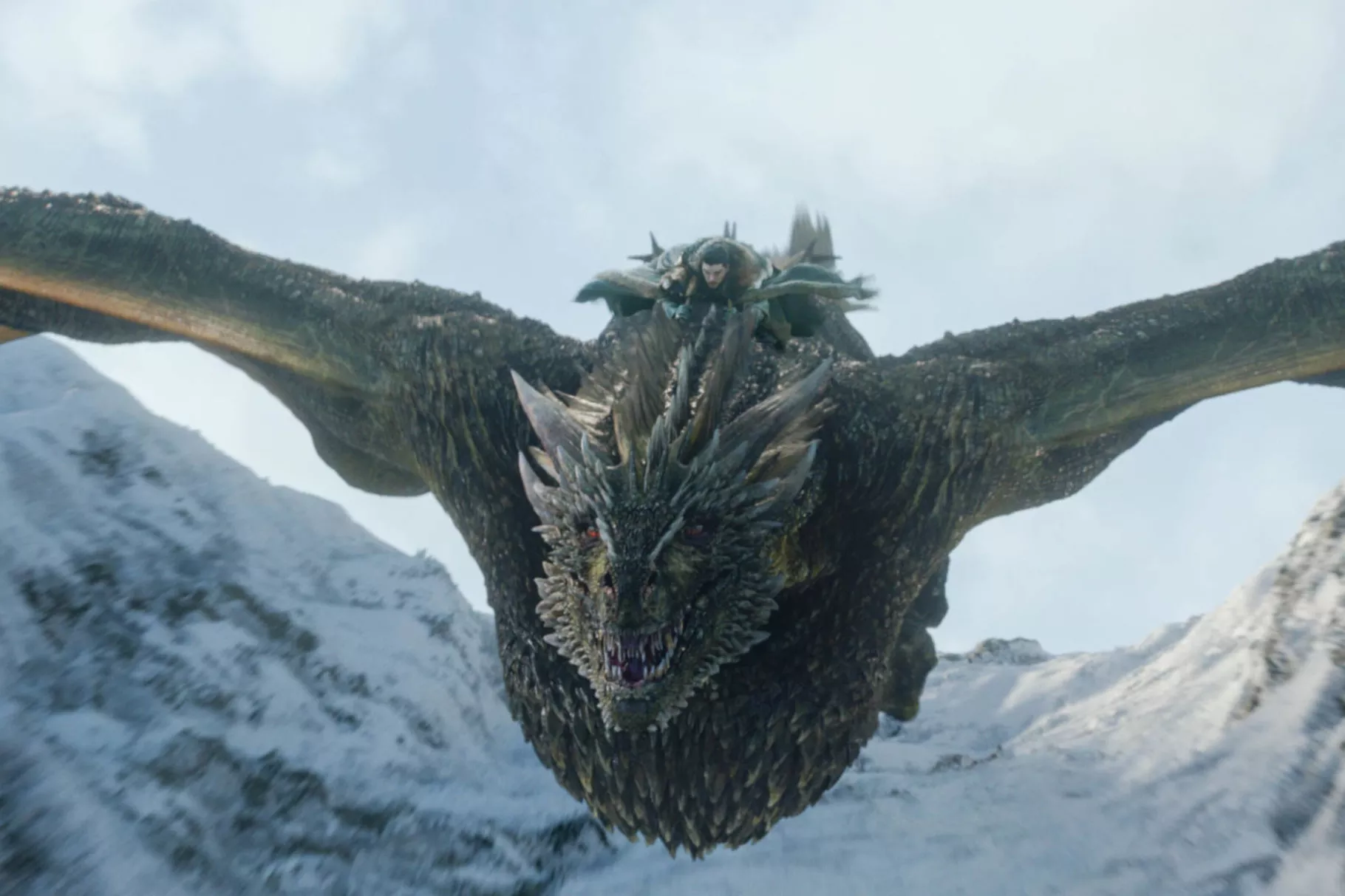
To top it all off, they made an already cheesy moment cringe-worthy as Jon comments “You’ve ruined horses forever for me,” before he and Dany kiss, while their dragons look on as two parents would look onto their teenage kids kissing for the first time. Eek. If this is the kind of thing I’m looking for, I’ll tune into the Disney channel. Disappointing stuff for what should have otherwise been a monumental moment in this story. Also, for what it’s worth, there are many characters I would be okay with mounting Dany’s other dragon, but Jon Snow just isn’t one of them. There is no person in this world that more strongly defines the character that rides a horse, sword in hand, ready for battle, than Jon Snow. The idea that he will abandon that to now fly through the skies on a dragon just doesn’t feel right.
King’s Landing
King’s Landing feels quieter than ever, but there are still some things brewing in the country’s capital. Most notably, Cersei (via Euron Greyjoy), has secured The Golden Company, a paid army of 20,000 soldiers. This will certainly get her a lot closer to leveling the playing field against Dany’s army, though no amount of soldiers truly pose a threat to dragons that breathe fire from the skies. After Euron secures this army for Cersei, he pursues the prize he has been after. While Cersei initially shuts him down, she appears to have a pretty quick change of heart, and just moments later, the deed is done. Again, the pacing of this felt a bit off, and something about Cersei sleeping with Euron feels a bit forced, but maybe that’s the point. The two have a strange exchange, which culminates with Euron rubbing her belly and telling her he is going to impregnate her with a prince. Not exactly sweet nothings in her ear, but hey, to each his own.
What was peculiar about this exchange is last season Cersei had led us to believe she was pregnant with Jaime’s baby. Was that perhaps a lie to try and keep Jaime’s loyalty and make others believe she had something to live for? Note that in this very scene, she is drinking wine, which points to the fact that perhaps her pregnancy was nothing more than a manipulative ploy. In any event, with five episodes to go, I find it hard to believe that her pregnancy, or lack thereof, will have a material impact upon this story.
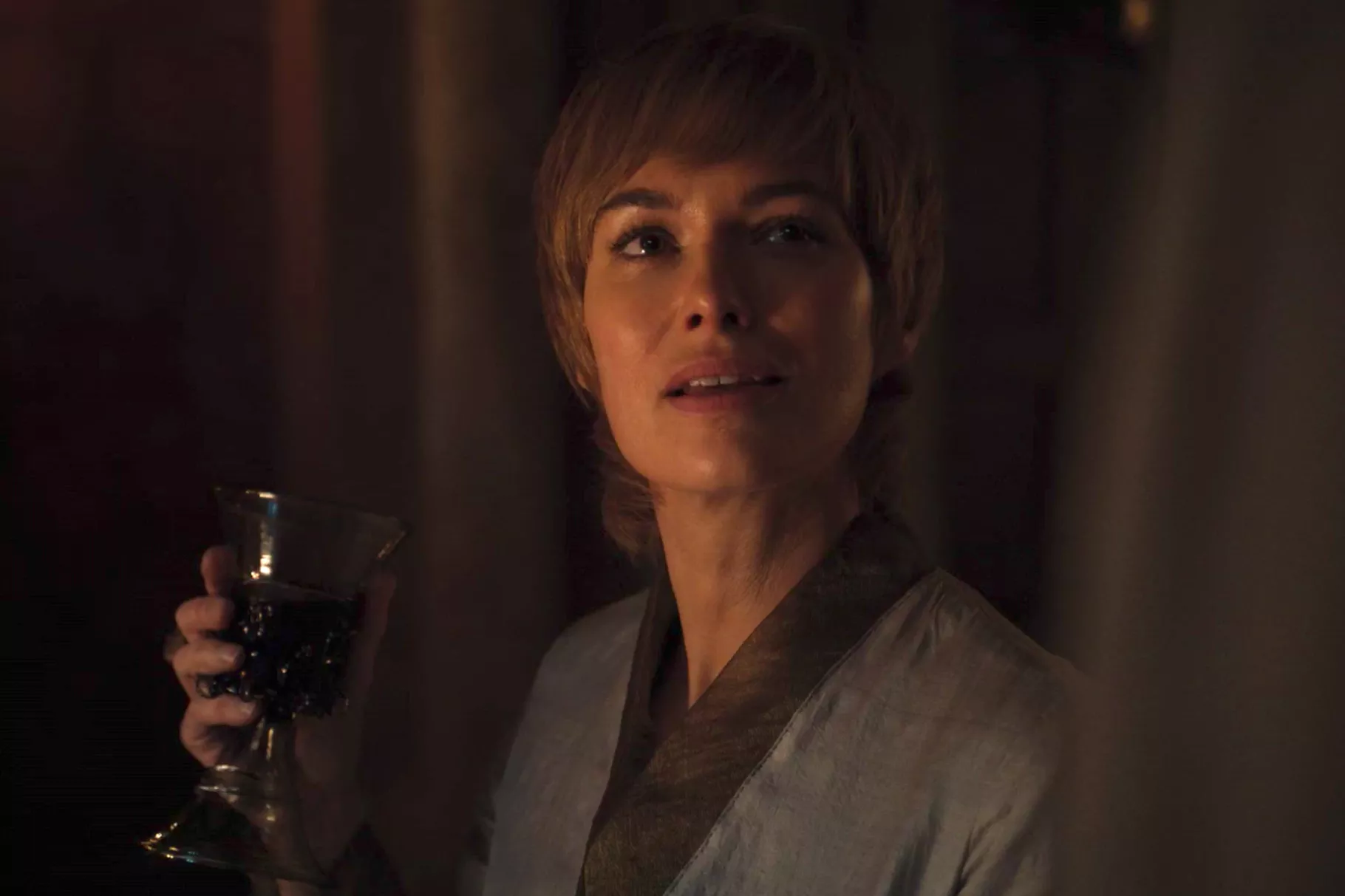
While Euron was off sexing up Cersei, Theon was able to rescue his sister, Yara. It all felt like a bit too easy of a rescue given this is Euron’s prized prisoner, but we’ll let that one go. Yara plans to reclaim the Iron Islands and mentions it could be refuge should the army of the dead take the land of Westeros. Yara gives her blessing for Theon to return to Winterfell to fight alongside the Starks.
In other King’s Landing news, Bronn, one of the few remaining characters in the city, is approached by Maestar Qyburn and asked to hunt down Tyrion and Jaime. He is given the very same crossbow that Tyrion used to kill his father, Tywin, several seasons back. It feels hard to believe that Bronn would kill Tyrion or Jaime, the two people he forged bonds with throughout this story, though perhaps for the right price he would. More likely than not, this is a plot-point to get him to Winterfell, where perhaps he will have another role to play. Before he departs King’s Landing, does he save the Sand Snake that Cersei still presumably has locked up in a cell?
The Mystery Spiral
In what was the most entertaining sequence of the episode, Tormund, Beric and several brothers of the Night’s Watch arrive to The Last Hearth to find that The Night King has made mincemeat of whatever humans were at the castle. But before he departed, he left a very clear message, which centered around a symbol we have now seen numerous times throughout the show: the mystery spiral.
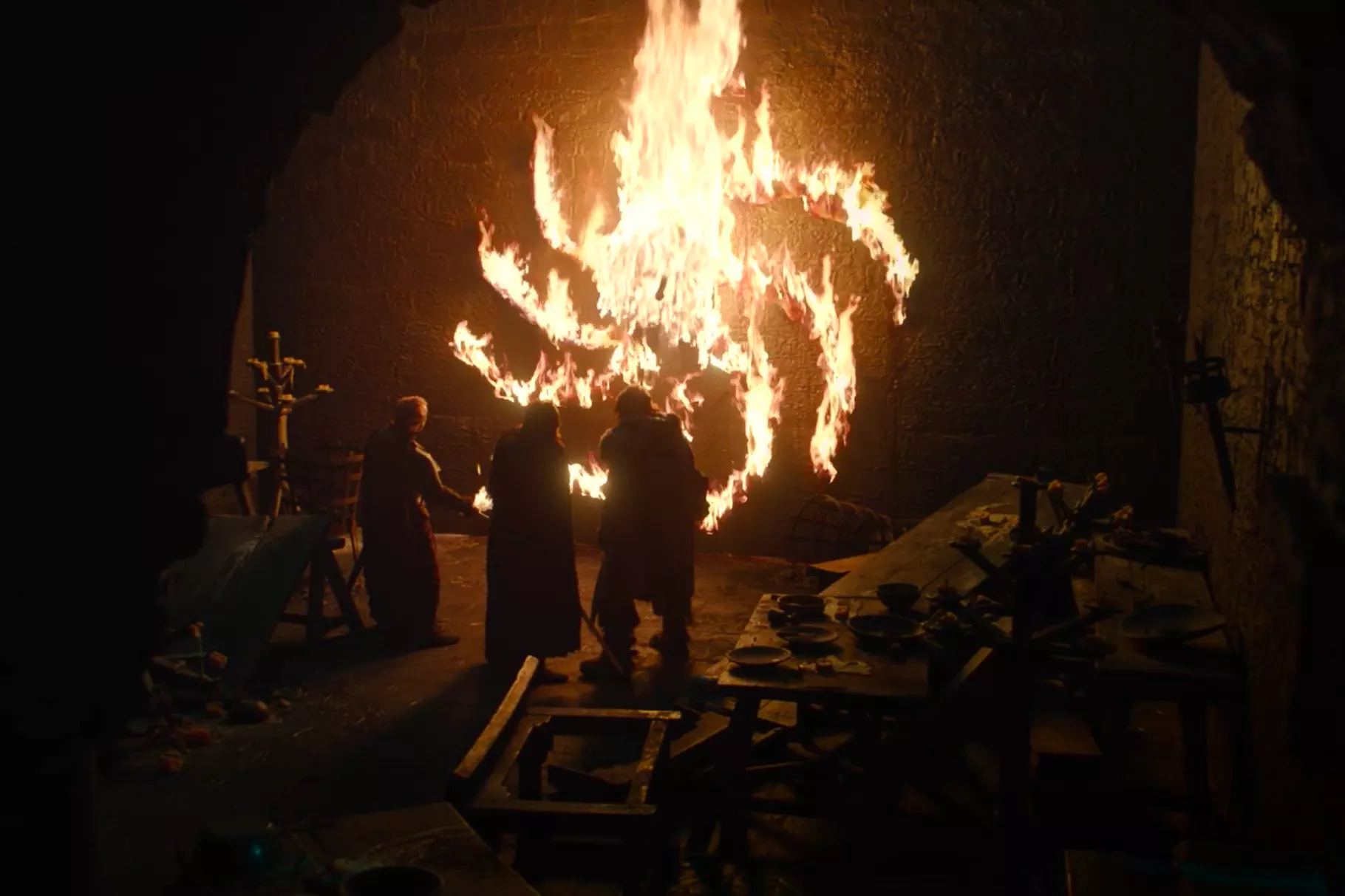
So what does this spiral signify? Well, it’s hard to really know at this point, but there are a couple important takeaways. First, the spiral is connected all the way back to The Children of the Forest who were the first inhabitants of Westeros, before The Night King, or man even existed. This spiral arrangement was significant to them. In the image below, from one of Bran’s vision, we can see the spiral arrangement that they created:
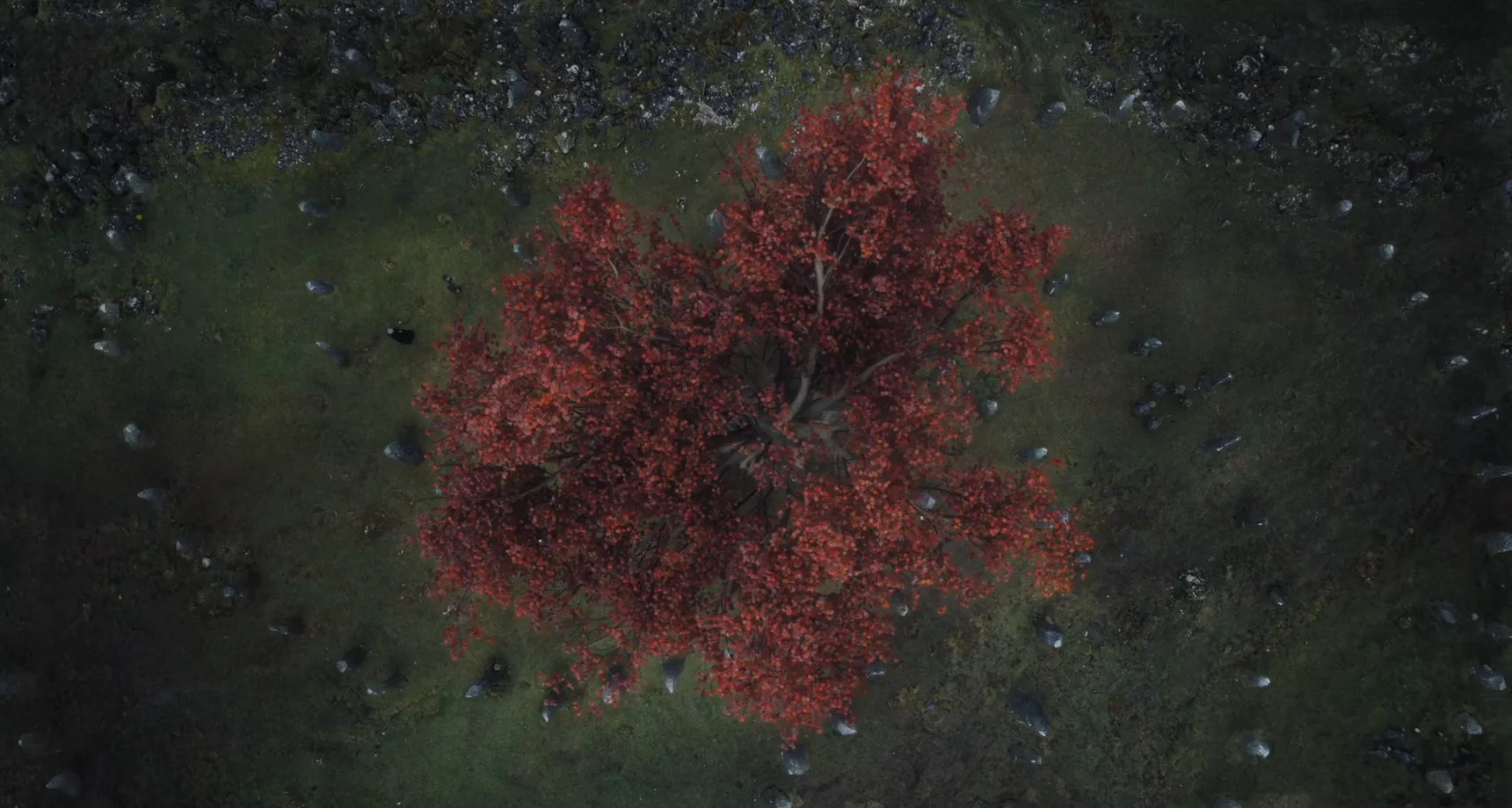
In the image below, we can also see an inscription in the caves below Dragonstone, which Jon discovered last season when mining for dragonglass. He explained to Dany that these inscriptions were made thousands of years ago by The Children of the Forest. One of those inscriptions again shows this very same spiral:
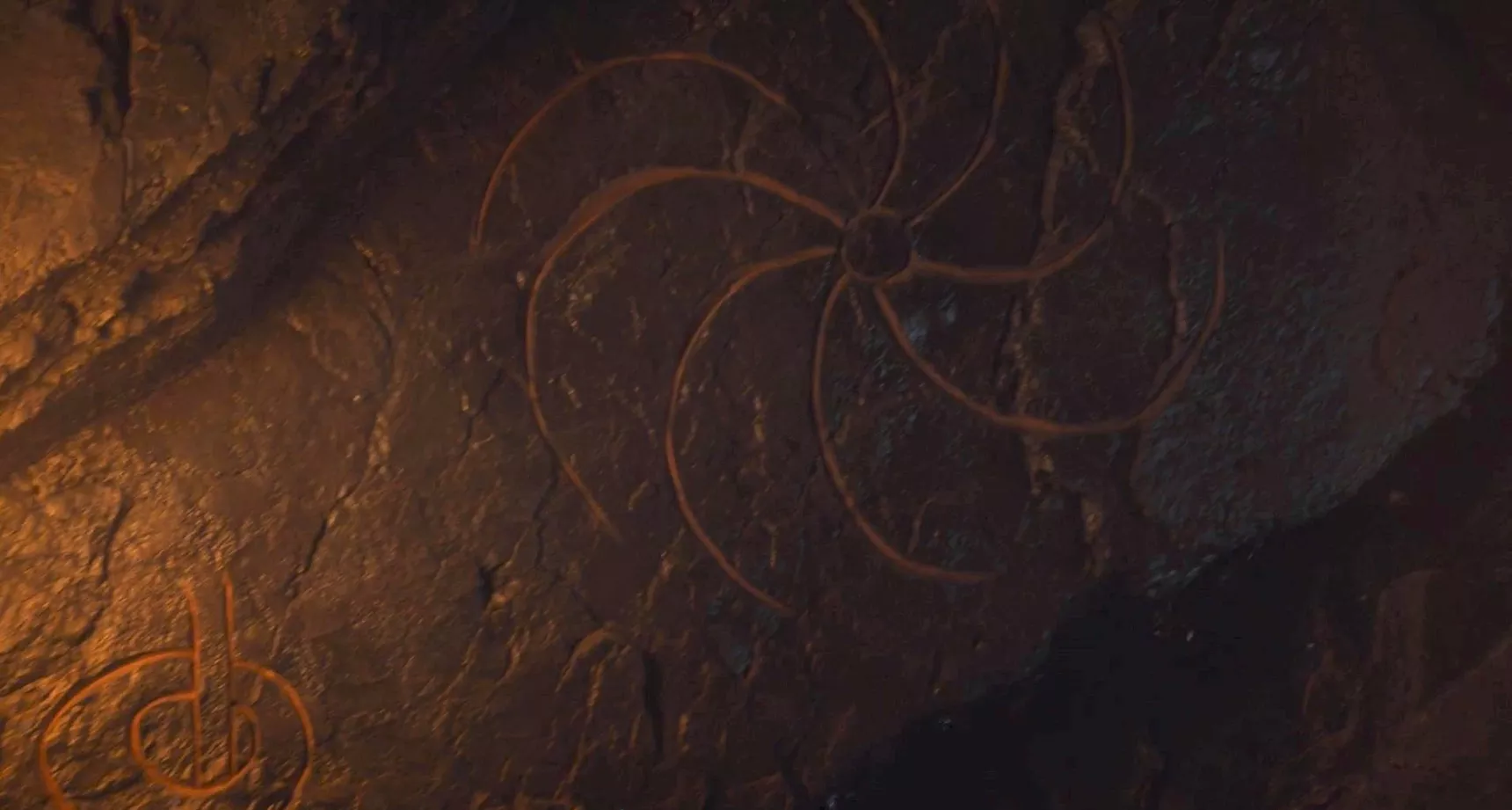
So we’ve established that this spiral was significant to The Children of the Forest. The other key thing we know is that it was these very same Children of the Forest that were responsible for creating The Night King in the first place by inserting dragonglass into the heart of a human (see below).
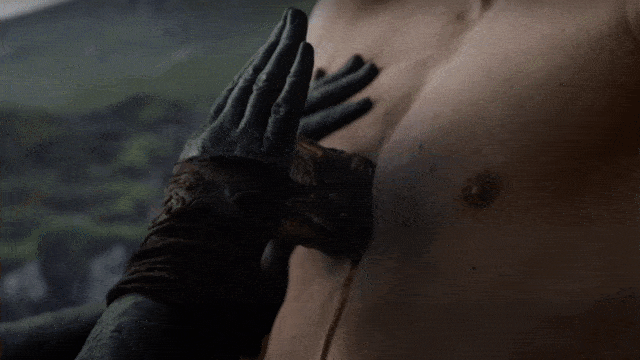
From there, we know The Night King adapted the spiral and this marking started appearing throughout the show, generally associated with death.
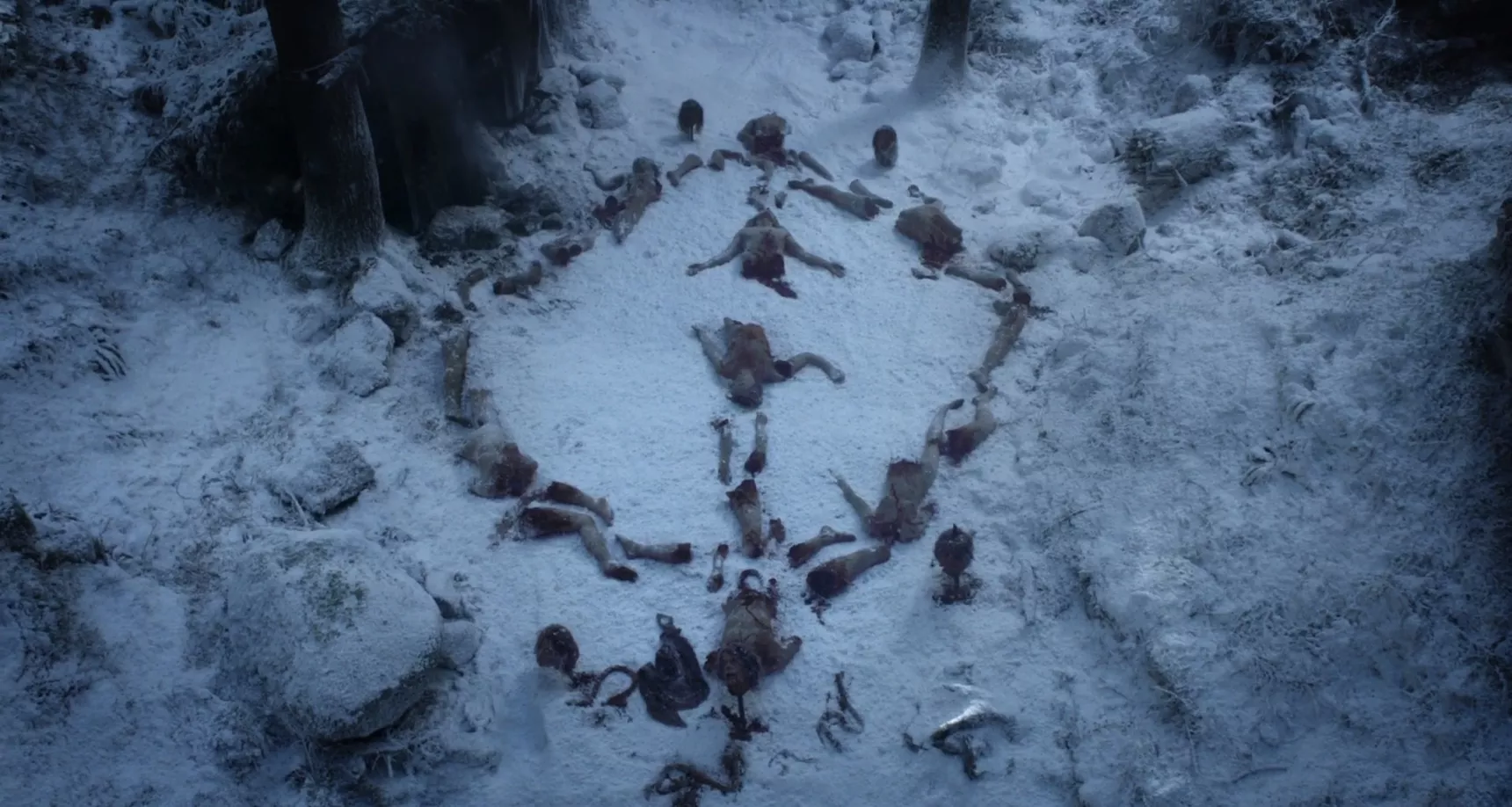

So while we don’t know exactly what the spiral represents, we do know it underscores the connection between The Children of the Forest and the Night King. There are major questions to be answered, which have significant implications around what this story is ultimately about. The first question is why did The Children create the Night King as we saw above? Was there some type of balance they needed to create between good and evil, light and darkness, fire and ice? The next question is who was the human they turned into The Night King and why was he chosen? As mentioned in a previous post, that scene takes place in The North, so it is likely a Northerner, and perhaps even a Stark, which would further explain the connection between The Night King and Bran, who is now the Three-Eyed Raven. This all leads to perhaps the most important questions, which is: is The Night King actually evil? My money says no. I believe he was a human that was turned into The Night King against his will and he has been in some eternal struggle to accomplish something we are not yet sure of. I don’t believe he is killing humans to just kill humans — that’s too simple. I think there is a greater task at hand, one we will learn more about in this season. And the spiral may be a major clue to unearthing answers to some of these game-changing questions.
Aegon Targaryen
Before the first episode comes to a close, Jon finally learns his true identity, thanks to Samwell. Sam breaks the news that Jon is in fact the son of Rhaegar Targaryen and Lyanna Stark, and that his real name is Aegon Targaryen. This means that he, not Daenerys, is the rightful heir to the Iron Throne. Sam asks Jon, “You gave up your crown to save your people — would she do the same?” In addition to dealing with the psychological baggage of learning that his entire life has been a lie, Jon also must now figure out how he is going to play his cards with Daenerys. Does he establish that he is rightful heir to the throne and ask her to step aside? If so, is she willing to? Furthermore, how does this impact their relationship? Jon’s father, Rhaegar, was Daenerys’ older brother, making her Jon’s aunt. Do they continue their romantic relationship after learning of their aunt/nephew connection?
Lots of questions to be answered here and lots of different ways this could play out. Yet, like many other parts of this episode, I felt this was another moment that should have been a lot more powerful than it was. This storyline has been building for years now and was one of the most popular fan theories. Once we learned the truth of who Jon really was, it was just a waiting game until he himself found out the same. I imagined something more impactful than a quivering Sam Tarly just coming out with it. And Jon’s reaction rubbed me the wrong way — he seemed to be more focused on the fact that Ned had been lying to him than the fact he just learned he was half Stark, half Targaryen, has two totally different parents than he’s thought his whole life, and is also heir to the Iron Throne. I would have hoped for more from a scene like this, period.

